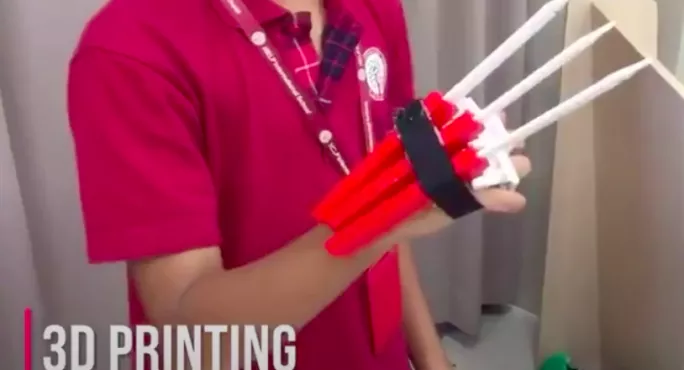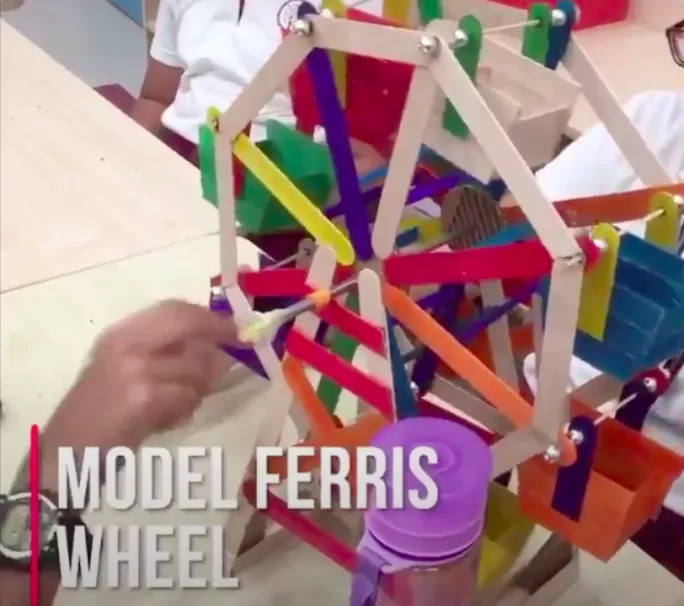- Home
- 6 ways ‘passion projects’ inspire creativity
6 ways ‘passion projects’ inspire creativity

What do a board game, a model fairground ride and a fully-functioning 3D-printed Wolverine claw have in common?
They’re all examples of the brilliant creations from our Year 6 pupils’ “passion projects”.
“Passion projects” is the term we use to describe our focus on letting pupils create, design and build something entirely of their own choosing. It can be more simple - one student made a Greek warrior’s helmet - through to the complex, such as a fully operational electronically operated drink dispenser.
In doing these projects, pupils learn all manner of skills - from problem-solving and creativity to learning to fail and time management, all while having a lot of fun, too. So how can you do something similar?
Primary school creativity: passion projects
1. Coming up with an idea
Of course, one of the main issues when it comes to passion projects is the initial idea: what are the pupils passionate about? Some pupils will have instant ideas that make sense and have the potential to become great projects.
Others will have nothing. In fact, it’s fair to say that most will struggle to find an idea independently, especially at such a young age.
That’s part of the fun. You can prompt them to start thinking about areas of inspiration and innovation - from the UN Sustainable Development Goals to current affairs, issues in the community or even just looking at videos of people making other inventions such as iPad stands and table dividers to help spark creativity.
From this, ideas arise from creating water filters to creating a tactile alphabet for visually impaired children to help them learn to write. We also had some children design a coin sorter for their loose change.
It’s all about helping them to find something that excites them.
2. Sourcing resources
Of course, building something requires resources. Not always easy when budgets can be varied.
But you don’t need endless tech gadgets to make something great: simple cardboard boxes, egg cartons, glue guns and so on can make great creations.
But you may find the wider community is also able to help when it comes to resources: from loaning 3D printers to donating the electronics needed to create a drinks dispenser.
However, the main purpose is to develop the pupils’ creative thinking, problem solving and independence. Whether that be by using a 3D printer or an old milk carton, it really doesn’t matter.

3. Upskilling teachers
Once you have the ideas and the materials, many educators may be concerned about their own lack of knowledge, though. How can we support the students if we don’t know how to construct and create ourselves?
As we are an Apple School, we have followed its design thinking process, which consists of four parts: explore, plan, build, evaluate. This can be adapted to suit your own needs and is a concise way of helping pupils to structure their project, too.
We also have a great learning and innovation team, which can support staff and pupils with the skills they will need to use in order to complete their projects.
If this is not available to you, teachers may need to upskill when it comes to using cutting blades and hot glue guns.
Safety is the main priority when children reach the build stage, and these tools can cause problems if children are not trained beforehand.
As such, make sure you are comfortable with tools you may have to use before allowing children to have access to them.
4. Fitting it all in
Another concern could be timetabling and fitting this into a busy schedule. However, this need not be a problem.
Firstly, our students only receive one session per week on their projects in school. During that time they have access to adult support, share ideas with peers and use any tools they need that are not available outside of school.
However, beyond that the projects are completed at home.
Secondly, as these are Steam projects, they can often be incorporated into aspects of science, maths and art lessons.
Literacy is also interwoven throughout the projects with various speaking and listening opportunities, including the presentation of the end product.
As such, a timetabled lesson could make way for a passion projects session for the duration of the project.
The final factor in timetabling is that they should not last for more than a term.
5. Time to reflect
Only running for a term can mean that some pupils don’t end up with a completed project.
However, this failure to deliver a completed project is not a bad thing - it teaches them about time management, if nothing else.
All pupils should be given the opportunity to reflect on their projects at the end and, if they have not completed it, learn from this and develop a strategy for success in the future.
Indeed, as a facilitator of passion projects yourself, you should also be prepared to fail at first. There are lessons to be learned from every attempt, the main hurdle is taking the risk.
6. Time to celebrate
After 7 weeks of hard work, the students presented their #passionproject and many of them really blew us away! Super impressed with how far they went directing their own learning. #geniushour #HIS_Learning pic.twitter.com/PiMOBmmdgX
- HISYear6 (@HISYear6) July 6, 2019
Ideally, the end product - whether finished or still in progress - should be showcased in order to celebrate the pupils’ achievements.
Whether this be virtually or in schools depends on your current situation, but pupils take great pride in demonstrating what they have been creating to their parents, families and wider school community.
Overall, passion projects give pupils the opportunity to explore and express themselves in ways that conventional learning doesn’t.
They are able to learn by solving real-world problems, develop creative and critical thinking skills, and grow in confidence as their voices and ideas are heard. And these projects are a lot of fun, too!
Luke Edeson is a primary teacher at HELP International School, Kuala Lumpur, Malaysia. He has taught internationally for 13 years
Keep reading for just £1 per month
You've reached your limit of free articles this month. Subscribe for £1 per month for three months and get:
- Unlimited access to all Tes magazine content
- Exclusive subscriber-only stories
- Award-winning email newsletters

